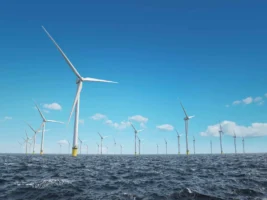Renewables and climate protection, so goes common wisdom, are costly endeavors that inevitably throw a spanner in industrial economies geared for growth. But an excellent new study conducted by PricewaterhouseCoopers Advisory for the European Climate Foundation contradicts this ostensible truism.
As Paul Hockenos explains, it shows that while the transition to a low-carbon energy system may indeed cost money, economies can grow – not despite low-emissions policies, but also because of them.
Green policies are an investment in the future. (Thorben Wengert / pixelio.de)
In fact, four of the five countries examined in the report – Denmark, Germany, Sweden, and the UK – have decreased greenhouse gas emissions while their economies have expanded. (The Netherlands is the lone sheep of the five on decarbonisation.)
One of the most interesting observations is that all five have gone about it in different ways. In other words, there’s no one way to do it. Just like with development, every country has its own path. Denmark, for example, stimulated the wind power and efficiency sectors by investing heavily in R&D and creating a domestic market for technology.
Since the 1970s, it has used investment subsidies, feed-in tariffs, energy tax refunds, and fixed subsidies per kWh. Early investments in district heating enabled switching from oil to renewables and natural gas on a large scale.
Sweden alone, where carbon emissions fell most dramatically, set off on the path of nuclear – and intends to stay there. Still, because of its large hydro energy capacity, Sweden is one of the few countries largely powered with renewables. Germany, with its feed-in tariff, has favored onshore wind and solar PV, and put the lion’s share of the financial burden on end-user consumers. It is phasing out nuclear at the same time that it is decarbonising and sighting to renewables.
The UK’s economy has reduced carbon emissions by replacing coal and oil with natural gas and increasing efficiency. It’s investing in renewables now – and nuclear, too. The Netherlands relied on its gas reserves and efficiency measures, which did not create a new domestic technology industry or jobs the way Germany and Denmark did. Nor has it slowed rising emissions.
The new technology industries are considerable, but not game-changers in and of themselves. The report, for example, calculates that in Denmark low-carbon industries contribute 1.6 percent to Gross Value Added and 1.5 per cent to employment.
In Germany, the figures are 1.7 percent and about 1 percent, respectively. The contribution to exports in Germany is less than 1 percent. One thing the report seems to stress – which is directly relevant these days in Germany – is that states with progressive renewables policies have to protect their industries, for example, with exemptions.
This raises the counterfactual: Would these economies have grown were industries not spared the taxes or incentives needed to boost renewables? If so, how much of the growth would have been affected? Could more industries help consumers by shouldering at least some of the weight? So, what are the takeaways here? Proactive, supply-oriented policies are most likely to drive decarbonisation.
For the time being, renewables require subsidies, which consumers will bear the brunt of. Even where energy prices rise the most (Germany and Denmark), export-oriented economies can remain competitive on international markets.
Moreover, energy policies can lead to avoided costs of CO2 emissions as well as energy savings. Also, increased security of supply as a result of diversification decreases an economy’s vulnerability to price shocks and geopolitical risks.
Lastly, economies can create new sources of economic growth; investments in renewables and energy savings can be offset by new industries, products and other economic activities like servicing. Pain can lead to gain.
Source: Energy Transition. Reproduced with permission.










